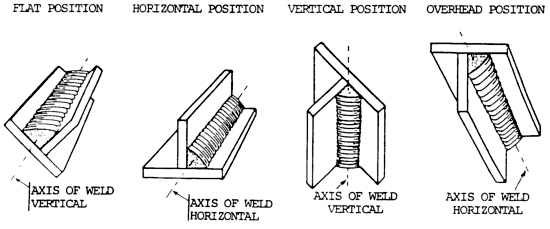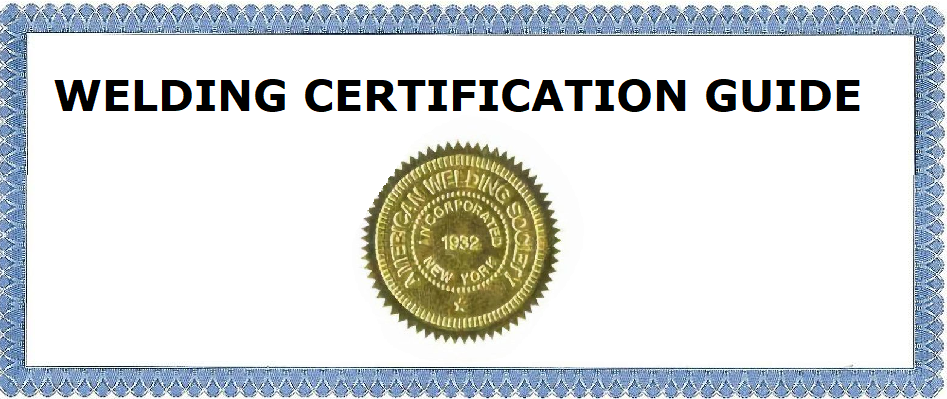What is a certified welder
Welding certification is a welding test that assesses a welder’s proficiency in creating sound quality welds. These welds must adhere to an industry standard for a defined welding procedure.
The test is conducted by a certified welding inspector who must test the welds to determine whether or not you have earned certification. Testing can be done by visual inspection as well as bend testing and other tests.
Certified welder programs are available to anyone. The test is performance based and there are no prerequisite courses required to take a certified welder test.
What are the different types of welding certification
There are many different types of welding certification depending on what type of career you are pursuing. If you want to work professionally as a welder, it’s a good idea to look at the requirements needed for each job and figure out which type of certification it requires.
AWS has published 240 codes so it is important to know what type of certification you want to achieve. Different certifications can show a welder’s ability to work on specific metal thicknesses, welding processes and position. Some welders have lots of different certifications to show a range of capabilities.
There are a number of organizations that have certified welding programs. The three biggest ones are:
- The American Welding Society (AWS) www.aws.org
- The American Society of Mechanical Engineers (ASME) www.asme.org
- The American Petroleum Institute (API) www.api.org
Each organization offers different types of certification, for example AWS offers a Certified Welder Program (CWI), a Certified Welding Inspector (CWI), Certified Welding Educator, and many more. You can see the full list of certifications on the AWS website. The most popular type of welding certification is the AWS certified welder program.
Certified Welder (CW) program
The Certified Welder program tests welders on their capability to perform welding procedures used in welding industries. The test is performance-based and welders are tested on their ability to perform a set of welds defined by the type of welding code they are applying for.
1. Steel structural/plate welding certification
The most common welding code in commercial welding is the AWS D1.1. This is for everyone involved in welding steel structures. See the full list of AWS certified welder programs.
AWS D1.1 qualification also has a combination of letters and numbers that follow which identifies the level of proficiency. For example:
- 1 for the flat position.
- 2 for the horizontal position.
- 3 for the vertical position.
- 4 for the overhead position.
- F for a fillet weld.
- G for a groove weld.
2G certifies you for horizontal groove welds, 3G certifies you for vertical groove welds, and so on.
If you qualify with a groove test (the letter G), you will automatically be certified for fillet welds (the letter F). However, if you are certified in 4F welding you will not be certified for 4G. So, it’s better to take the groove welding test.
Similarly, if you qualify for 4G welding, you will also be certified for lower numbers 3G, 2G and 1G (and 4F, 3F, 2F, 1F).
If you qualify for 3F welding, you will also qualify for 2F and 1F, but not 4F, 3G, 2G or 1G.
In commercial welding, welders often need to complete the AWS MIG 3G certification as proof of proficiency. For example, a job description may state that they require a 3G or 4G welder.
2. Pipe welding certification
If you want to be certified for pipe welding you will need a different certification program such as the ASME Section IX. Pipe welding is more challenging and has additional numbers and letters to indicate your proficiency.
- 5 is for pipe in horizontal fixed position.
- 6 is for pipe in 45 degrees fixed position.
- R is for restricted position.
6G welding is often considered the holy grail of welding certifications because it proves you can produce quality welds 360 degree around a pipe that is static.
How to get welding certification
If you want to take the AWS Certified Welder test you will need to book an appointment at an AWS accredited testing facility.
Get in touch with a test facility to book a test. Make sure you turn up on time and are prepared for the test.
Once you’ve passed the test you will get the option to pay a little bit extra to be listed on the certified welder registry. This is a good thing to have on your CV.
Welding school is not required to take the test. But welding school will give you everything you need to prepare you for the test. Learning purely by experience could be cheaper, but would probably take a lot longer and you might not be sure what you’re doing wrong without guidance.
What is in the welding certification test?
All welding tests are different, the AWS Certified Welder test is a hands-on practical assessment, but other welding certifications may contain a written test that can include practical knowledge and safety understanding.
During a hands-on practical assessment you’ll have to set up the welding machine, choose the materials, and perform the weld you’re being assessed on to the QC7 standards.
Different tests are given for the material type, base metal thickness, welding position, type of welding process, etc. With thicker base metal you will need to do more passes to fill the joint, increasingly the difficulty. Your tests will need to look good as well as being structurally sound.
Below is a picture of some of the different positions you could get tested on in the AWS D1.1 Welder Certification test.

Where to get welding certification
Most welding schools we have listed offer a welding certification program. If you are ready to book your welding certification test you should visit the list of AWS accredited test facilities and book a test as the nearest test centre to you.
Why should I get welding certification?
Getting certified is a great way to instantly prove that you can perform quality welds. Not every welder can pass a certification, so it is a mark of achievement.
Welding certification will increase your career prospects. When you attain your certification you will instantly gain an edge in job applications ahead of welders who never got their certification. In many welding jobs you can’t start working unless you have up-to-date certification or excellent work experience.
How much does it cost to get certified?
Welding certification typically costs between $150 and £300. The cost of certification depends on the establishment where you get certified and the type of certification you are applying for. A basic 3G plate welding certification may cost $150 and 6G pipe welding certification may cost $300. If you are applying for a Certified Welding Inspector (CWI) this could cost $1000.
If you want to join a welding school on a Welding Certification Program, this program could last from six to eighteen months. This may cost anywhere between $3000 and $20,000, depending on the program.
How long will it take to get certified?
The time it takes to get certified will typically go through three steps: How long it takes to train your skills, how long the test takes and how long you have to wait for results.
1. Training.
If you are an inexperienced welder looking for a 6G pipe test it will take a lot longer to train for your test than if you’ve already an experienced welder and want to take a 3G test.
If you want to train to become a professional welder, the best way to train is at a vocational school with a welder training program. Training could take from between four months to two years depending on the course.
2. Test
The test itself will be at an accredited test centre. You will have to demonstrate that you can deposit a sound weld that will be inspected. If you fail your test you can schedule in a new test date.
3. Certification
Whilst you can hear if you passed the test on the day, the weld test results will need to be sent off to be processed before you can receive your certificate. AWS can take four to six weeks to process your certification and send out your certificate.
Certification maintenance
Welding certification does not last forever and you will need to renew your certificate. For the AWS Certified Welder test, you will need to pay $10 every 6 months and submit a maintenance form to prove you are still an active welder. If you do not submit the maintenance form and your timeframe expires, you will need to be tested again to regain your certification. Requirements vary for each certification, so check the requirements of your certification to ensure it doesn’t simply expire.

